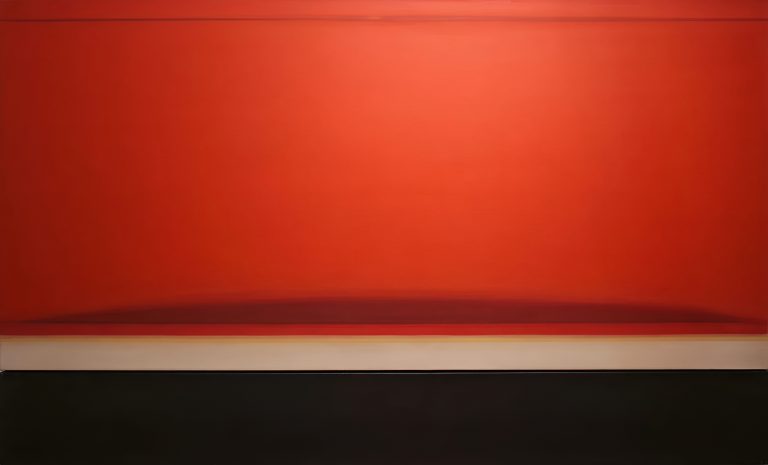Although often introduced as a student of Mark Rothko and Clyfford Still, Abstract Expressionist painter Lawrence Calcano was a master in his own right. He had a successful career at a time when homosexuality was illegal in the United States, not to mention a social taboo, and despite these prejudices, he had his first solo show at the Martha Jackson Gallery in 1955. Jackson was a champion of avant-garde art and had exhibited the work of Willem de Kooning, which was well known. Miss (1950–53) series. Calcagno’s shows were equally successful, attracting Time MagazineThe review noted that the San Francisco native’s paintings are “saturated with rich California earth tones and the unpredictable, fog-filled horizon of the Pacific Coast.”

Carcano’s career had been on a tear since that first exhibition: he had a total of 80 solo shows throughout his career and participated in nine Whitney Biennials (then Whitney Annuals) over a 20-year period. In the following years, however, he fell from blue-chip exhibitions and international shows in Paris, London, Copenhagen, and Mexico City to obscurity. The Whitney, for example, collected five of Carcano’s paintings and watercolors, but the last of them was exhibited in 1970. Indeed, without the efforts of critics and curators Lawrence Alloway and Gerald Nordland, Carcano’s legacy as a visionary abstractionist might have been lost further into history.
It is time to revisit this artist, who was once categorized as an Abstract Expressionist and then largely disappeared from its catalogue, but who in fact built his own network in a nomadic life. time Carcano talks about whether he was influenced by Europe: “With the death of Matisse, the great tradition of French painting was coming to an end.” He adds: “There were still important figures like Picasso and Braque, but they were no longer focused on what was in front of them. Young painters were looking for a way out. Some of them thought we had already found the way out.” What Carcano and his contemporaries “got” was abstraction at the time: painterly, expressive, and inspired by the subconscious.
Calcagno incorporates what he learned while studying at the California College of Fine Arts in San Francisco into his own personal style, using bold colors to outline horizons and blend them with dynamic landscapes filled with simple brushstrokes, suggesting The breadth of nature, as seen at different times of day. Each canvas presents a strong sense of place and time: images of the ocean in a storm, a battle between deep blue and black, as in Pacifica II (1971); cross-sections of the earth, with continuous expanses of red and ochre at the far edge of Sapaque II (1955), which merge into a jagged mass of dark brushstrokes in the center. The spirit of these works may have been derived from the guidance of Rothko and Still, but they should also be read in the context of his European contemporaries.

European masters such as Braque and Picasso may not have had much influence on Carcano, but Europe was relatively tolerant of homosexuality in the 1950s and 1960s, and homosexuality was allowed as long as it was private and not seen. There he found his companion: on a trip to Paris, he met the painter Beauford Delaney, and the two spent two years as a couple in museums and cafes. This relationship led Carcano to the writers James Baldwin and Ralph Ellison, friends of Delaney, who came to the French capital to escape racial discrimination in the United States and seek greater freedom for themselves and their works.
Delaney and Calcano developed a close artistic connection, sharing a belief in the spiritual nature of painting and abstraction, and they remained close after Calcano returned to the United States. In Delaney’s later years, the two exchanged hundreds of letters. The letters are vulnerable and candid, the prose almost spiritual. In 1959, Delaney wrote: “Dear Larry, Your wonderful and informative letter arrived today like a sentinel from heaven. I walked into Paris this morning… and received your letter… It almost debilitated me.”
Carcano’s relationship with Delaney is just one of many avenues of interpretation of his work that have yet to be fully explored. “Painting is the only way I find psychological tolerance and release,” he once wrote, as Marika Herskovic quotes in Abstract Expressionism in 1950s America: An illustrated survey with artist statements, artworks, and biographies. “My life has always been driven less by intellectual or rational considerations than by subjective impulses, by the things I’m passionate about.”

